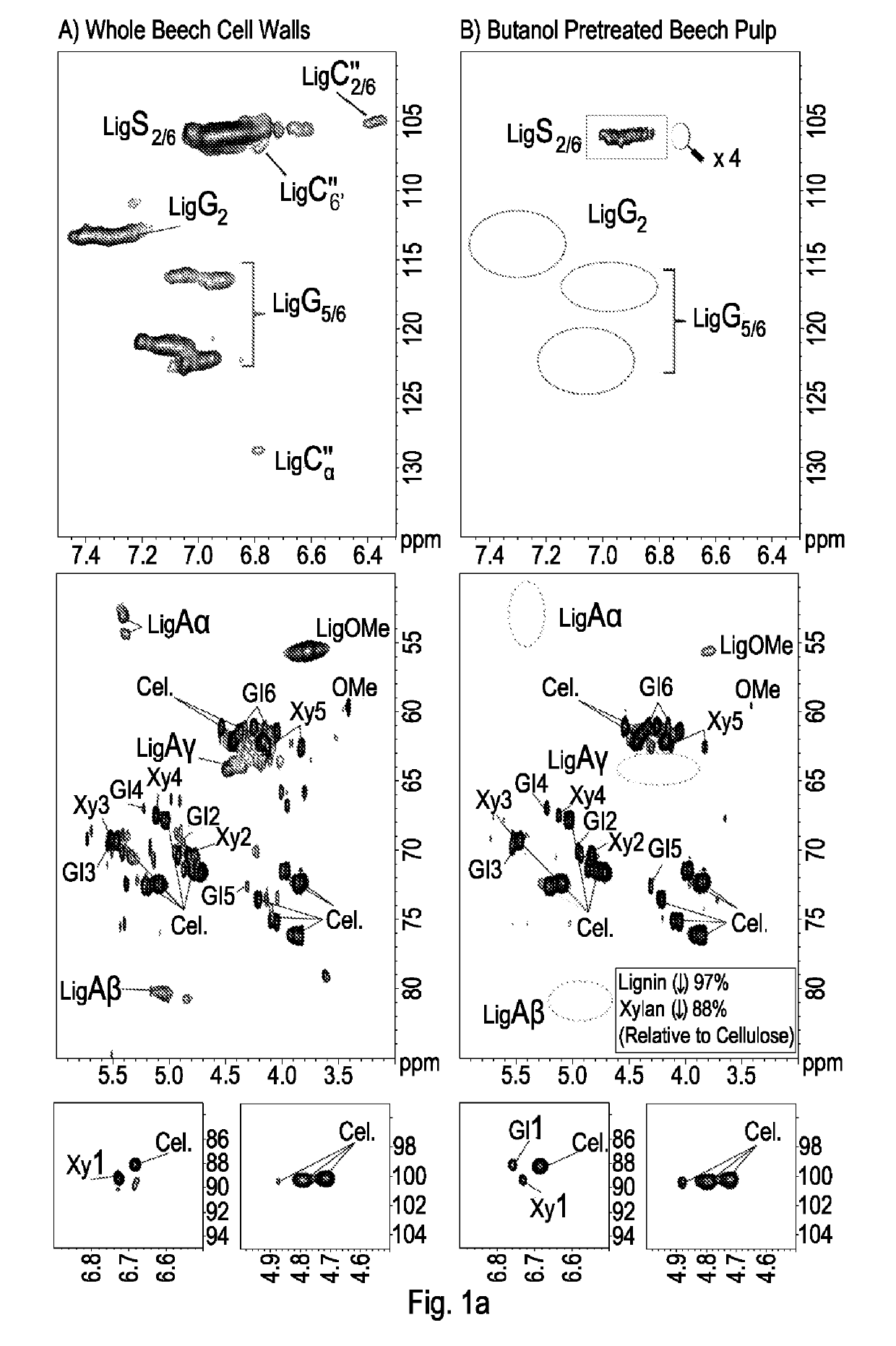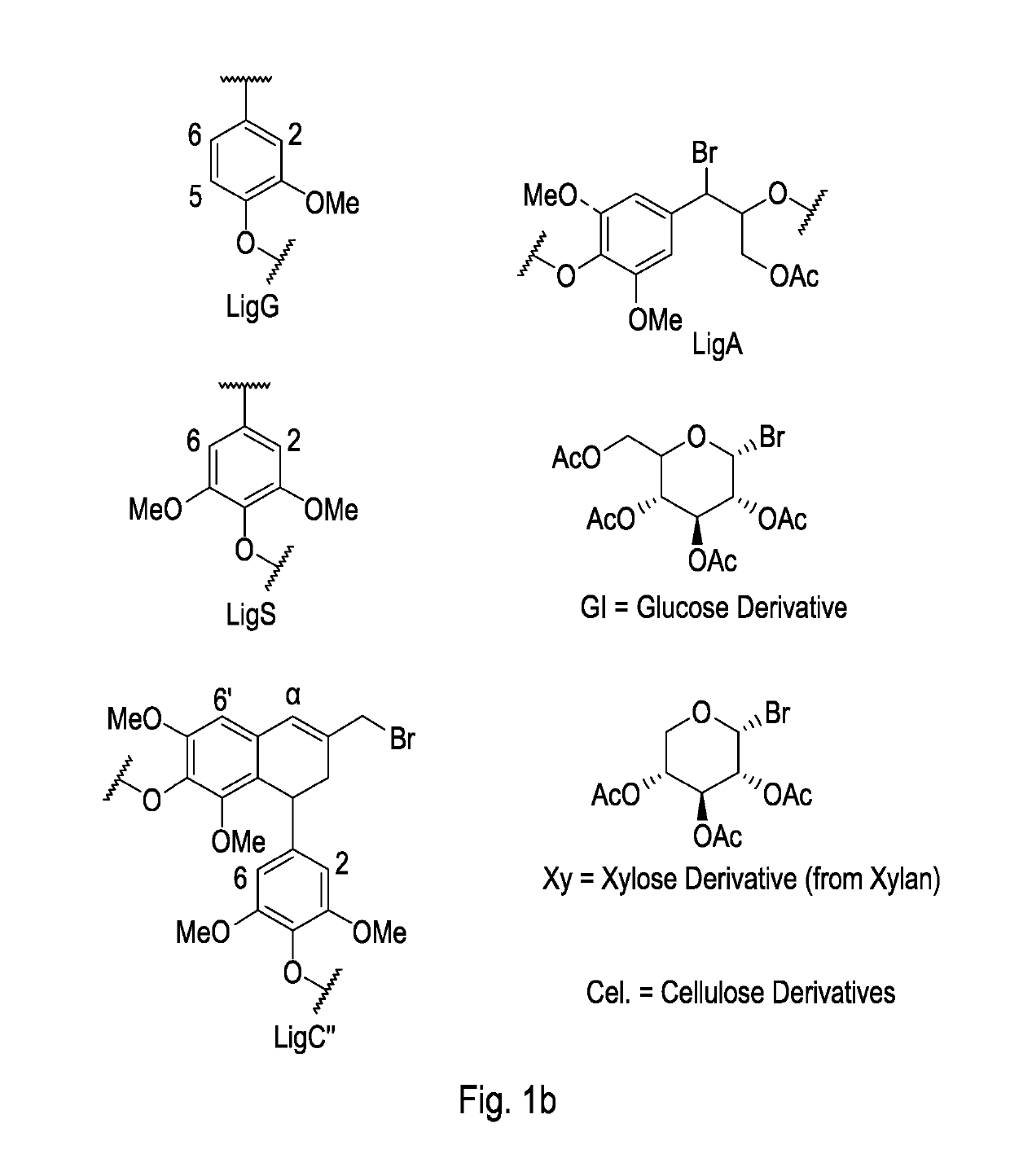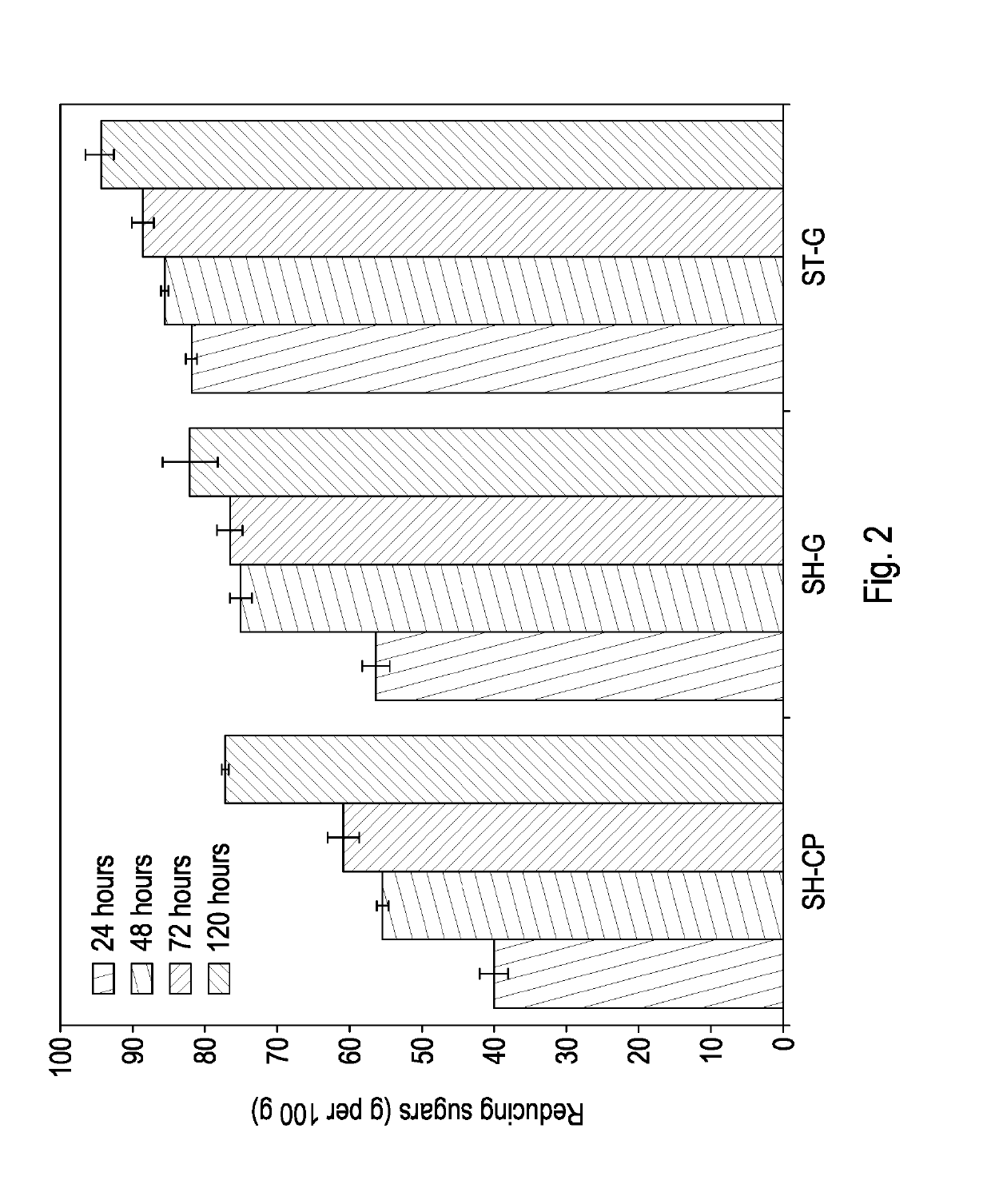Modified lignin and separation methods
a technology of lignin and separation methods, which is applied in the field of processing of lignocellulosic biomass, can solve problems such as difficulty in valorisation
- Summary
- Abstract
- Description
- Claims
- Application Information
AI Technical Summary
Benefits of technology
Problems solved by technology
Method used
Image
Examples
Embodiment Construction
[0014]According to a first aspect the present invention provides a method of processing a lignocellulosic feedstock, the method comprising:[0015]heating the lignocellulosic feedstock in a solvent mixture comprising an acid and at least 80% by volume of n-butanol to produce a reaction mixture including a butylated lignin.
[0016]The composition of solvent mixtures used for the methods of processing a lignocellulosic feedstock described herein does not include the presence of water, or other components that are present in the lignocellulosic feedstock itself. A dried cellulosic feedstock such as a sawdust may have from 5% to 20% water content. An undried lignocellulosic feed stock may have higher water content.
[0017]The production of a butylated lignin by the methods described herein has been found to produce a reaction mixture from which good quality lignin, cellulose and hemicellulose products may be readily obtained as described further hereafter. With some feedstocks, especially woo...
PUM
| Property | Measurement | Unit |
|---|---|---|
| water content | aaaaa | aaaaa |
| weight | aaaaa | aaaaa |
| time | aaaaa | aaaaa |
Abstract
Description
Claims
Application Information
 Login to View More
Login to View More - R&D
- Intellectual Property
- Life Sciences
- Materials
- Tech Scout
- Unparalleled Data Quality
- Higher Quality Content
- 60% Fewer Hallucinations
Browse by: Latest US Patents, China's latest patents, Technical Efficacy Thesaurus, Application Domain, Technology Topic, Popular Technical Reports.
© 2025 PatSnap. All rights reserved.Legal|Privacy policy|Modern Slavery Act Transparency Statement|Sitemap|About US| Contact US: help@patsnap.com



